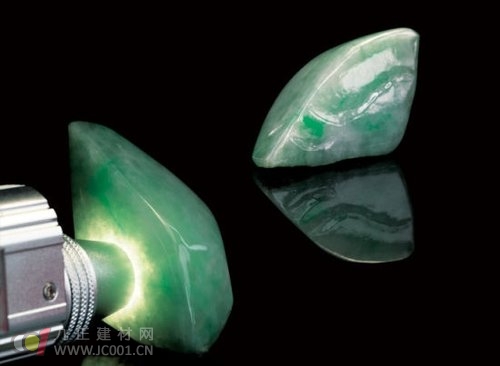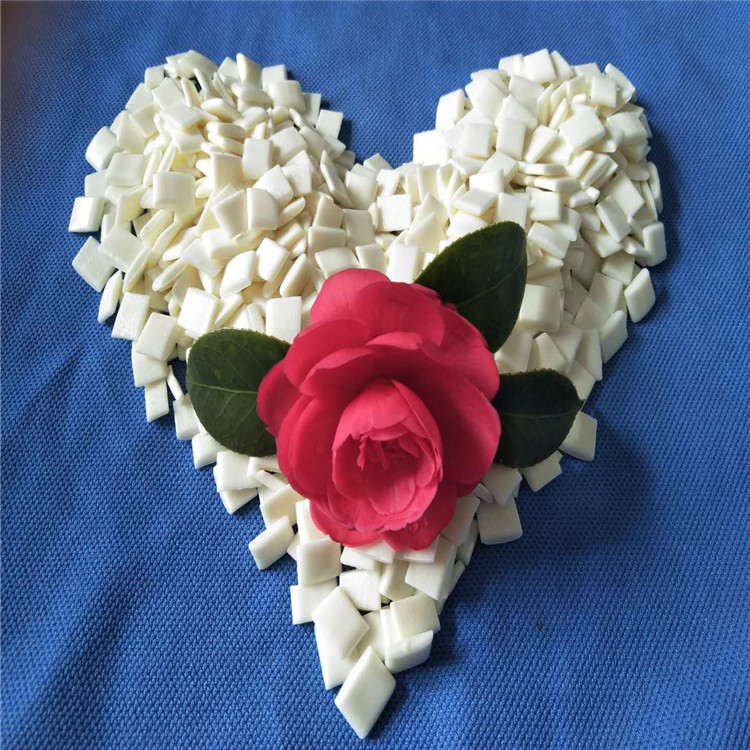How to identify the five characteristics of jadeite quality and authenticity
Jadeite has been known for its profound and crystal-clear texture since ancient times, and it contains the mysterious atmosphere of mysterious oriental culture and has won the reputation of “Oriental Emeraldâ€. Jadeite not only has a beautiful external luster, but also has rich connotations. It shines in the wisdom of the outside, is not flashy, not frivolous, quiet and elegant, is the character pursued and praised by many people; its texture of softness and softness, tenacity, gentleness, rich rhyme, just like the portrayal of national character; it represents a yearning, A kind of sustenance, a kind of inner peace and calmness. It is these charming special features of the jade, which has always been a collection that people are eagerly sought after. So how do we identify the quality and authenticity of jadeite, and harvest the truly collectible jade in the increasingly complex jade market? We will explain the five characteristics of jadeite for everyone, and hope to provide some reference and help for everyone's jade collection.
The first feature is the transparency of the jadeite. The transparency of jade refers to the depth of light energy through the jade. When light is projected onto the surface of the jade, part of the light will be reflected from the surface, and part of the light will pass through the interior of the jade. Due to the different thickness of the particles that make up the jade, the crystal form and the bonding mode are different, and the ability to transmit light is also different. The more light the jade shines, the better its transparency, making the jade look very crystal clear and have the feeling of "green water". According to the ability of Jadeite to transmit light, the transparency of jadeite can be set to four levels: transparent, translucent, micro-transparent and opaque. The typical varieties represented are: glass, ice, alfalfa, and bean. The main factors affecting the transparency of jadeite are as follows: the depth of the color of jade itself will affect the transparency, the deeper the color, the worse the transparency; the thickness of jade will affect the transparency, the thinner, the better the transparency.

Emerald rough
The second feature is the texture of the jade. The texture of jadeite is commonly known as the important indicator of the quality of jadeite. The texture refers to the structure of jadeite, which we often say. Because jadeite is a collection of various minerals, its structure is mostly fibrous structure and granular structure. The finer the better, the less stone flowers, spots and cracks. The fineness and roughness of the jade texture is determined by the size of the grain. The larger the grain, the coarser the texture, the translucent to opaque, and the smaller the grain, the finer and more translucent. According to the particle size, the texture can be divided into a dense grade, a fine fraction, a medium fraction and a coarse fraction. The size of the jade grain directly affects the quality of the jade texture. Generally speaking, the jade texture under the fine grain structure is soft, the water head is better, and the polishing degree is good.

Jade ornaments
The third feature is the clarity of the jade. The purity of jade refers to the extent of the internal jade, that is, other mineral inclusions (裂纹) and cracks contained in the jade. Like other gems, jade is a major factor in value evaluation. The jadeite is mainly white and black. Black enamel, some appear in dots, called black spots, also become filamentous and banded, called black and black bands, mainly a black mineral, with the largest hornblende, mostly black spots In the darker emerald. White enamel, mainly in the form of granules and lumps, generally called "stone flower", "bubble", etc., mainly some albite minerals or aggregates.瑕疵The impact on the quality evaluation of high-grade gem-quality jade is very great. For the middle and low-grade jade carving materials, fine jade carving crafts can be made according to the color arrangement. The presence or absence of cracks has a great influence on the quality of jadeite. There are two kinds of cracks in jadeite: one is crack caused by external impact, and the other is crack between crystals. The crack caused by external impact has great influence on the quality. The intergranular crack is caused by the boundary of the coarse crystal boundary, and the general influence is not large, but the quality of the jade with intergranular crack is poor.
The fourth feature is the jadeite. Emerald enamel refers to some impurity minerals contained in it. Its color and shape have an unharmonious inspection effect on the whole. It is often a spotted black, yellowish brown mineral granule, a silky floc, and a cloud-like white stone flower. On the whole color of jade raw materials or finished products, the presence of these cockroaches will affect the value of jadeite, especially for high-grade jade. In summary, it is cotton, grain, scorpion, and crack. Cotton is the original internal feature of jadeite. It is in the form of small particles, round or live clouds. Severe white cotton is a stone flower, which affects the beauty of jade. The grain is also the original internal feature of the jade, which is the texture caused by the difference in color or structure of the jade, such as the ribbon stone.绺 is an internal feature of the emerald. There are two main formation mechanisms: the first one is that jadeite is composed of different crystal particles. When the crystal particles are coarse, it is easy to produce a large particle gap, which produces a flashing effect under the illumination of light; the second is the formation of jadeite. After the cracks caused by the crustal movement, such as squeezing, smashing, etc., the cracks are repaired by the infiltration of hot melt materials such as magma, and a fine healing crack is formed, which is an extremely fine flaw that is invisible. Cracking is a kind of cockroach that is more serious in jade. The jade is affected by natural or artificial external forces. According to the way of cracking, the appearance and durability of jadeite are affected to varying degrees.
The fifth and most important feature is the color of the jade. In the natural world, the color of jade is ever-changing and colorful. It is often said that the red color of the jade is "翡" and the green is "cui". Rich green, bright red and violet are loved, especially green is the most precious. The jewellery industry often judges the green of jadeite based on the ten words "strong, yang, pretty, positive, and" and "light, yin, old, evil, and flower". "Concent", that is, green is full, thick, thick and not black; on the contrary, green is light, and weak color is "light". "Yang", that is, green is bright, bright, and generous; on the contrary, if the green is dim and has no luster, it is "yin". "Beauty", that is, the green is even and soft, and can be coordinated with the "bottom" and "water"; on the contrary, if the green is uneven, such as dots, peaks and blocks, it is "old". "Positive", that is, green is pure, green does not have blue, green and other mixed colors; the opposite is "evil." "Harmony", that is, green is uniform, harmonious, and does not cost chaos; otherwise, it is "flower". The order of green is: green, micro-striped yellow green, yellow-green, micro-striped green and gray-green. The red emerald is called "red dragonfly" and is commonly known as "spring" in the industry. The “翡†color is often distributed under the weathered surface of the original stone or distributed along the original stone fracture. The red dragonfly is mostly the epidermis part of jade, also known as "red skin" or "red fog". It is difficult to see the natural red color of the good red jade, but it can not be met. The best red is called "cocknut red", the red is bright and bright, the jade is delicate and transparent, and it is the top grade in the red dragonfly. Common red mites are mostly reddish brown or dark red, thick and not transparent, jade is thick, and more with impurities, the value is not high. The scutellaria is located above the red dragonfly and is closer to the epidermis. Most of the jaundice is turbid, often brown, not enough yang. Natural high-quality yellow scorpion, also known as "golden jade", is orange or honey-colored, crystal clear, bright and even, is a top of the yellow scorpion, relatively rare. Purple, commonly known as "cyan", is like the color of violet flowers, also known as "violet." According to the different shades, it is divided into three types: pink purple, solan purple and blue purple. Pink purple refers to the purple with micro-striped pink, the texture is fine, translucent, and there are more internal cotton mites. Eggplant purple, which refers to the eggplant-like blush in purple, has a rough texture, visible mineral particles in the naked eye, poor transparency, and a large amount of cotton aphid inside. Blue-violet, meaning purple with blue, rough texture, almost opaque, often mixed with light brown or white cotton, is a low-end product.
Bookbinding is the process of connecting individual pages of a book into a single volume.
The history of bookbinding started in the first century with religious codices that were printed on vellum and bound.
This technique was the beginning of bookbinding and the same concept is still used today.
Hot-melt adhesives have advanced so much that the term [perfect binding" is now used to describe all adhesive binding
Our spine glue has high adhesion, weathering resistance and impact resistance
It has the Environmental certificate. it is convenient to be used. energy-efficient.
It has no bad smell. no much smoke.

Milk White Spine Glue,Hot Melt Glue,White Hot Melt Glue,Eva Hot Melt Adhesive
Taixing Chaobang Adhesive Co., Ltd. , http://www.cb-adhesive.com